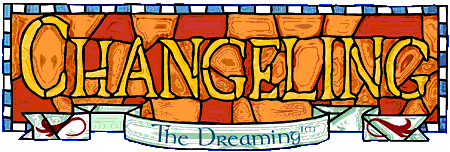Koffie Heuwel

Exotic Gardens
South Africa has not been a peaceful place for the fae since they first arrived with European colonists two hundred years ago. Predating the Resurgence by generations, commoner Kithain long settled into South Africa. They settled in and warred with the native Gallain. Of course, it was never as simple as one side having at the other.
Oh, the Trolls that accompanied the early Dutch settlers tried that. They clashed with the native fae but rediscovered that their trademark phalanx wall was vulnerable to the surround tactics of the Zulu assegai. After a stinging and embarrassing defeat, the Trolls retreated behind the fort walls of early colonists. Then they observed something startling. When the British came, bringing other Kiths, the native Gallain grew weaker. And yet, the Kithain had not yet claimed almost any freeholds. Then they realized: the Gallain were not weak against cold iron, they were not weak against the Banality of greedy penny-pinching. They were against the death of their culture.
So did the commoners, Trolls and others, become active participants in the colonization, Christianization, and even apartheid government of the native peoples. As the Zulu and Thembu cultures shriveled under the onslaught of colonial rule, brought to fore by the advantage of modern technology far more than courage and righteousness, so did the native Gallain. Their sacred sites abandoned, new freeholds were claimed, and the Kithain reigned triumphant—at least in the colonized, “civilized” areas. But those Gallain lurked in the Bush, waiting and daring for their enemies to dare emerge, so that their homeland might one day be reclaimed from the arrogance and greed of European Kith and kin alike.
Gallain
The native Gallain are one of the five known Pure Land fae Great Families, called the Emere. The Emere, native to Africa, namely sub-Saharan Africa, have existed among the many cultures of the African peoples for thousands of years. In South Africa, among the Xhosa and Zulu peoples, the Tikoloshe and Hai-uri families dwell. Much of their traditional territory was lost (as was much territory in Zululand and Thembuland) but a few freeholds were maintained in the bush.
Laws
The Kithain uphold the Escheat. While most of the Kithain once supported apartheid, that support has nearly vanished. Apartheid’s end has simply been accepted, even by those reborn with Remembrance of the “Lancer Wars”, as they’re called (often mirroring the Anglo-Zulu Wars of the mortals). Some nobles since the Resurgence have settled in the area and while many commoners resent them, they have earned their keep by providing a fresh and robust defense against Gallain aggressions.
The end of apartheid and Truth & Reconciliation did not happen at all between the Kithain and Emere. In fact, the exact opposite took place: the Sidhe took the reins and drove the Gallain even further away from Durban and helped the Kithain double-down on their claims.
The Dreaming
The Dreaming of colonized South Africa resembles that of mainland Europe, but with more varied and colorful fields of vibrant flowers. The Near Dreaming tells a different tale. Durban itself is quaint, with cobbled roads leading to taverns and homesteads. The bush, however, is dark and terrifying. Roads out of the city are treacherous, filled with terrible chimerical beasts that often resemble Jabberwocky mash-ups of safari animals and demonic nightmares.
Special Events
Special events are annual (or more frequent) holidays or special ritual days that the main group or groups observe as a whole community. Attendance and participation are often expected of all members, and sometimes required.
Pennons
House Gwydion sponsors this festival of champions at Coedmore Castle every October 4th. Chances at divvying up the spoils of the long-ago conquest of Zululand still abound, after all.
Highsummer Night
Commoners of both Seelie and Unseelie persuasion prefer Highsummer Night for its vigorous celebrations and feastings. It’s held every July 17th, at the height of the hot season. Redcap festivities (naturally) tend to get violent and no one has ever even attempted to stop its excesses.
Umthayi Marula
This First Fruits festival is honored by the Emere. In it, they encourage their mortal kin in rural areas of Zululand and Thembuland to remember the harvest and its blessings. It is an opportunity for the Emere to remind the indigenous peoples of who they really are and what they really treasure. The Tikoloshe take special glee in the first and ritualized brewing of marula beer. It is held in the last week of October when all the harvest has been brought in.
Diwali
The Hindu festival of lights is widely celebrated in Durban among the large Indian population. The hsien work with the hengeyokai to both enjoy and patronize this 5-day long holiday that is sometimes analogously compared to Christmas. Whereas the hengeyokai honor Diwali as part of their totemic honoring of the sun and moon, the hsien do so to cultivate their Asian people’s cultural reverence in the midst of their diaspora. After all, without their culture, the hsien fall as low as the Pure Land Gallain.
“Take a load off, chommie. Light a skyf if you’d like. It’s rough out there. For you, the moerkoffie’s free. But drop a rhyme if you’re bielie enough.”
-- Dennis Gardner, Boggan Owner of Koffie Heuwel



